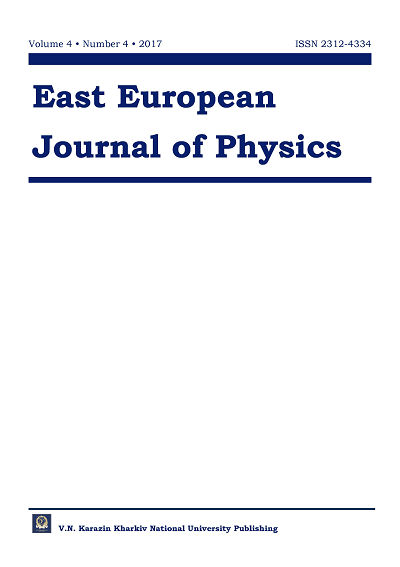BRIEF ANALYSIS OF REAL-TIME DATA COMPUTER REGISTRATION, TRANSMISSION AND PROCESSING METHODS IN NUCLEAR PHYSICS
Abstract
Structural and principal problems in the field of control equipment for nuclear physics development are examined, in particular, the influence of dead time on the spectrum data aggregation and methods of correcting this influence. The variants of the organization of spectrometric systems, their advantages and disadvantages, the possibility of using different digital interfaces and computer buses are analyzed, and some of existing spectrometric equipment implementations examples are reviewed. The result of the work is an analysis of existing approaches to the equipment for electronic spectrometry organization and development, as well as a recommendation based on the approaches and different technological solutions to achieve the best ratio of performance and versatility is given. The problems that may be encountered in the spectrometric equipment development process and the existing solutions are described. The workability of various operating systems and real-time programming modules to the organization of processing equipment is examined, also the impact on the development-related cost and laboriousness of the opted facilities for solving these problems is examined, and the optimal solutions are proposed.
Downloads
References
2. Shendrik R.I., Radzhabov E.A. Introduction to the physics of scintillators. Part 2. – Irkutsk: ed. IGU, 2014. – 61p. (in Russian)
3. Manoilov V.V. Hardware of Automation Systems for Analytical Devices. – St. Petersburg: National Research University "ITMO", 2012. – P. 72,90,94. (in Russian)
4. Tanenbaum E. Computer architecture. – 5th ed. – St. Petersburg: “Peter”, 2010. - P. 232-236, 244-246. (in Russian)
5. Tanenbaum A., Bos H. Modern operating systems (Series "Classic of Computer Science"). – St. Petersburg: Peter, 2015. – P. 56-57. (in Russian)
6. Olifer V.G., Olifer N.A. Computer networks. Principles, technologies, protocols: Textbook for high schools – 4th ed. – St. Petersburg: Peter, 2010. – 432p. (in Russian)
7. Parnell K., Roger B. Comparing and Contrasting FPGA and Microprocessor System Design and Development. – XILINX Whitepaper: (WP213 v.1.1), 2004. https://www.xilinx.com/support/documentation/white_papers/wp213.pdf
8. Burdonov I.B., Kosachev A.S., Ponomarenko V.N. Real-time operating systems. – Moscow: Institute for System Programming n.a. V.P. Ivannikov RAS, 2006. - P. 3-4, 14-16, 19, 29-31. (in Russian)
9. A review of domestic radiometric and spectrometric systems that can be used for the purposes of nuclear materials accounting and control. [FSE "Russian Scientific Research Institute of Automation named after N.L. Dukhov"] – Moscow. – P. 54-58. (in Russian)
Authors who publish with this journal agree to the following terms:
- Authors retain copyright and grant the journal right of first publication with the work simultaneously licensed under a Creative Commons Attribution License that allows others to share the work with an acknowledgment of the work's authorship and initial publication in this journal.
- Authors are able to enter into separate, additional contractual arrangements for the non-exclusive distribution of the journal's published version of the work (e.g., post it to an institutional repository or publish it in a book), with an acknowledgment of its initial publication in this journal.
- Authors are permitted and encouraged to post their work online (e.g., in institutional repositories or on their website) prior to and during the submission process, as it can lead to productive exchanges, as well as earlier and greater citation of published work (See The Effect of Open Access).








